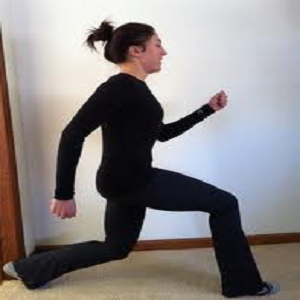How to do Lunges Without Hurting Your Knees

Lunges are a very effective work out for thighs, your butt and abs. They tone and work many muscles at once and are calorie burners. If your butt is too round, lunges will tone it and if it’s flat, the lunges will help to shape it. If they are done properly, your knees and other body parts will not fall target to aches and pains. Many people are hesitant to do lunges because they are afraid of the damage it can cause to the knees. Yes it is true that if they are not done following the right technique, they can injure the knees. The steps below show how to perform lunges without causing any damage. They are very simple and easy to follow.
Instructions
-
1
Start the exercise routine with the reverse lunges as they are easier. Forward lunges strain the knees because the thigh bone gets forced into the knee cap. It puts a lot of pressure as the patella is a sensitive part and the thigh bone is the largest bone in the body. If you are doing a reverse lunge, the pressure is applied backward. The thigh bone pulls away from the knee cap and it is not as painful for beginners.
-
2
You could also try the stationary lunges. Start without holding any dumbbells. Try the stationary lunges after you have completely mastered the technique of the reverse lunges. Keep some distance between your feet; they should be apart enough so that the knee does not go beyond the toe while you are performing the lunges. If it’s your first time, it is ok to hold some fixed object to give you support.
-
3
While you are performing the lunge, your weight should be in the heel. This tip needs to be followed in the stationary, reverse lunge and also while walking. If the weight is concentrated on the heels, it will apply pressure on the gluts and hamstrings and take some pressure off the knees. When you lower down in a lunge, the legs should make a 90 degree angle with the floor. Many people fail to do that. Stand in front of a mirror while performing so that you can monitor your movements.
-
4
Your shoulders and back should be straight, keeping your upper body upright. Many people hunch a little and let the shoulders get rounded; this causes the upper body to hinge around the stomach area. This will also cause pressure on the back. The stomach should be stretched; the belly button pulled inward and the chest should be out.







